General Insurance Blogs, Articles & Updates by - Magma HDI
Have us call you
- RENEW YOUR POLICY
- BUY NEW POLICY
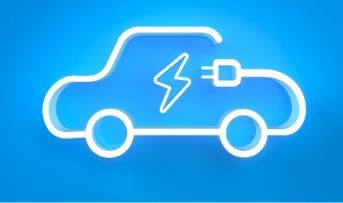
Save on tax by spending on electric vehicles!
With the world evolving, more changes are being made for a sustainable environment. One such significant development has taken place in terms of electric vehicles. They are cost-effective and eco-friendly fuel alternatives and will likely be the future of the automobile industry.
Electric vehicles have gained huge popularity and fame in a very short time. Over 19 lakh people are driving electric vehicles on Indian streets today. The Indian government has prompted the purchase of electric vehicles by giving a lot of incentives. These incentives can be availed by all individual buyers who want to invest in an electric vehicle and save the environment.
Since 2019, the Indian government has presented numerous schemes and rules in the budget for individual buyers. One of the most enticing schemes of these is the exemption of taxes. Whenever someone buys a new electric vehicle, they can save a lot on taxes. Surprising, right? Well, we will help you navigate through the details of this scheme in the article.
If you plan on buying an electric scooter or car, you should also buy new car insurance or two-wheeler insurance to keep your vehicle safe. Insurance is a worthwhile investment and a reliable resource to ensure financial safety during an emergency.
Now, let's look at the specifics of the incentives that the Indian government has specified for electric vehicle owners.
What is 80EEB?
Everyone looks at various ways to save taxes during the financial year's end. The 80EEB was introduced by the Indian government in the year 2019 for the promotion of electric vehicles. In the 2019 budget, it was indicated that an individual could claim up to Rs. 1.5 Lakhs deduction on their interest for a vehicle loan. This vehicle loan should be issued to purchase an electric vehicle.
Under this Income Tax Act, taxpayers can claim this deduction only once in an assessment year. The loan must be taken out for the purchase of an EV only. It will not work for any other vehicles, including hybrid models. The loan interest will be deducted for individuals only. It will not work for businesses or organisations.
Another important aspect concerning this vehicle's purchase includes the deduction in the Goods and Services Taxes. To promote the buying of EVs, the GST on the vehicles has been reduced from 12% to 5%.
Which vehicles fall under section 80EEB?
Not all vehicles fall under section 80EEB. You must know the specifics of the vehicle before you file a deduction in the interest. Under this section, any vehicle equipped with an electric motor powered by an electric battery is deemed eligible. The EV motor operates on the conversion of electric energy into mechanical energy.
What are the terms and conditions for claiming the deduction?
Let's summarise the terms to make it easy for you to make a decision
● The loan should be taken out for the purchase of an EV only
● The deduction is only offered on the interest amount of the loan
● The loan will benefit only individuals
● The loan should opt from a reputable financial institution
● The deduction claim can only be extended up to Rs 1.5 Lakhs. It cannot be exceeded.
● The deduction does not apply to an organization, a company, or a partnership firm
These are some of the most important pointers that you should keep in mind while you're buying an electric vehicle. With an EV, you can contribute to the environment and save substantially. It is high time that we switch to options that are eco-friendly and beneficial to the environment. You should also buy new car insurance whenever you decide to purchase a new EV to safeguard it from loss due to damages.
Click HERE to buy new car insurance policy.
Disclaimer: The information provided above is for illustrative purposes only. To get more details, please refer to policy wordings and prospectus before purchasing a policy.
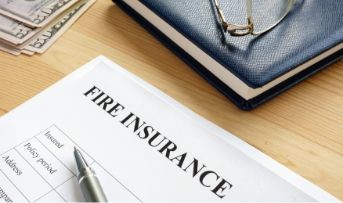
Why is personal accident insurance essential during floods?
Natural calamities like floods are unpredictable and can cause significant damage to life and property. They can disrupt normalcy and leave people struggling to cope with the aftermath of the disaster. Floods are dangerous and can cause financial instability if you are unprepared for them. Are you wondering how to safeguard your finances from the damages done by floods?
Personal accident insurance plans offer a range of benefits that can help minimise the impact of natural disasters such as floods. These insurance plans cover accidental injury, disability, and death caused by floods. They can help cover medical expenses, loss of income, and even temporary accommodation expenses.
In this blog, we will discuss in detail why personal accident insurance is essential during floods and how it can help protect you and your family during such natural disasters.
1. Protection against accidents
Floods bring along with them the possibility of several accidents. Personal accident insurance plans provide protection against accidental injury, disability, or death caused by floods. The coverage can provide financial assistance in case of medical expenses, temporary or permanent disability, or even death.
2. Medical expenses
During floods, medical expenses can rise significantly due to increased waterborne diseases. Personal accident insurance plans can help cover medical expenses, which can be a significant financial burden, especially for low-income families.
3. Loss of income
Floods can also result in loss of income for those who work in affected areas. Personal accident insurance plans can provide financial assistance in the form of compensation for the loss of income.
4. Quick disbursement of funds
Personal accident insurance plans usually offer quick disbursement of funds, which can be crucial during emergencies such as floods. In the aftermath of a flood, you may need immediate access to funds to cover medical expenses, temporary accommodation, or repair damages. Personal accident insurance plans can provide this quick access to funds when you need them the most.
5. Affordable premiums
Personal accident insurance policies are generally very affordable, with premiums much lower than other insurance policies.
6. Easy to purchase
Personal accident insurance policies are easy to purchase, and the application process is usually straightforward and quick. You can visit the websites of the insurance companies and apply online with a simple process which is a matter of a few clicks.
7. Offers customised coverage
Personal accident insurance policies can be customised to meet the specific needs of the policyholder. This means that the policyholder can choose the level of coverage they need based on their individual circumstances and budget, ensuring they have the appropriate protection during floods.
Personal accident insurance plans provide peace of mind during floods. Knowing that you are covered in case of any accidental injury or disability can help alleviate the stress and anxiety that comes with such natural disasters. Apart from the primary coverage, personal accident insurance plans also offer additional benefits such as ambulance coverage, hospitalisation expenses, and accidental death benefits. These other benefits can provide further financial assistance during floods.
In conclusion, floods can be devastating, but personal accident insurance plans can provide financial assistance during these difficult times. The coverage offered by these plans can help reduce the economic impact of accidental injury, loss of income, medical expenses, and property damage caused by floods. It is essential to have personal accident insurance plans to protect yourself and your family during natural disasters like floods. They are affordable, customised to suit your needs, and offer flexible payment options, making it easier to manage your finances in times of distress and danger.
Click HERE to learn more about the personal accident insurance plans.
Disclaimer: The information provided above is for illustrative purposes only. To get more details, please refer to policy wordings and prospectus before purchasing a policy.

What causes fire in CNG cars, and how to be safe?
The popularity of CNG vehicles has grown recently due to developments in fuel storage technology. CNG is a common fuel alternative for fleet cars since it is more affordable than petrol or diesel. It is a fuel of compressed methane gas kept in high-pressure cylinders inside cars. CNG vehicles have various designs, including sedans, SUVs, and pickup trucks.
CNG refuelling stations are now widely available at petrol stations, making refuel easier for car owners. There are several benefits of driving a CNG fuelled car, but there might come an instance where the gas would catch fire. This is a rare condition, but we cannot neglect the probability. Let's dive deeper into the topic to understand the causes of fire in CNG cars and how to stay safe.
While we're discussing car safety, it is crucial to invest in reliable car insurance. Various car insurance online India plans have grown in registration over the past few years due to their practicality and usability. However, the type of fuel the car runs on can affect the insurance cost and policy features.
Causes of fire in CNG cars
1. Fuel leaks
One of the main reasons for fire in CNG vehicles is fuel leaks. Because the fuel is kept in high-pressure cylinders, leaks could result from any damage to the fuel system. Due to its extreme flammability, CNG can catch fire when touched by heat or sparks.
2. Accidents or collisions
CNG vehicles are more likely to catch fire in an accident or collision. In a crash, the high-pressure cylinders holding the CNG fuel may break and catch fire.
3. Refuelling
In CNG vehicles, refuelling might also be a fire hazard. Transferring fuel from the dispenser to the high-pressure cylinders entails the creation of a static charge, which has the potential to ignite the fuel.
4. Inadequate maintenance
Routine maintenance is necessary to ensure the system operates properly. Components may become worn or damaged if the fuel system is not maintained.
5. Temperature extremes
The fuel system may be damaged or malfunction due to the fuel's ability to expand or contract under extreme temperatures.
6. Electrical malfunctions
In CNG vehicles, electrical issues can potentially result in fires. A malfunction in the electrical system might cause fuel to overheat and ignite because the electrical system and fuel system are interconnected.
Safety tips for CNG vehicles
When driving a CNG vehicle, certain safety precautions must be taken. Here are a few tips for driving a CNG vehicle safely:
1. Inspect the CNG kit regularly
Check the CNG kit frequently for any indications of wear and tear. If you see anything odd, get it fixed straight away.
2. Turn off the CNG supply when not in use
Turn off the CNG supply valve when the automobile is not used to stop gas leakage.
3. Don't overload the car
An overloaded CNG car may have high cylinder pressure. Observe the recommended weight restrictions for your vehicle.
4. Install your CNG kit at a certified shop
To ensure that a CNG kit is installed accurately and safely, it must be done by a workshop that has received certification. Before using the kit, always request a certificate of installation.
5. Avoid smoking in vehicles
Due to its extreme flammability, CNG can catch fire when in contact with a spark or flame. Therefore, avoid smoking or lighting cigarettes inside the car.
6. Maintain good ventilation in the car
For CNG vehicles, proper ventilation is essential to prevent gas build-up. To keep the car well-ventilated, keep the windows open at all times or turn on the air conditioner.
7. Observe traffic laws and drive safely
Drive safely and follow the regulations of the road to prevent collisions. In an accident, shut off the CNG supply immediately and leave the vehicle.
8. Avoid keeping anything flammable in the car
The fire or explosion risk increases if flammable items, such as petrol, aerosols, or chemicals, are kept inside the vehicle. Avoid keeping these things in your car.
CNG is a preferred alternative fuel for vehicles due to its affordability and minimal environmental impact. However, compared to traditional gasoline-powered vehicles, CNG vehicles have a higher chance of catching fire. Following the proper safety precautions and being aware of the causes will help prevent them and guarantee safe driving. In India, CNG car insurance operates similarly to insurance for other types of vehicles. Before buying car insurance online India, thoroughly studying the policy terms and conditions is advised.
Click HERE to buy car insurance online India.
Disclaimer: The information provided above is for illustrative purposes only. To get more details, please refer to policy wordings and prospectus before purchasing a policy.

Know how you can ensure the safety of your electronics during a cyclone
Cyclones are natural disasters that can take place anytime without any prior notice. In a country like India, where the weather conditions are uncertain, it is best to be cautious and always prepared. Before a cyclone hits, you should be prepared with all the necessary steps to counter it well.
Cyclones can also wreak havoc on electronics, an essential part of our daily lives. If you live in an area prone to cyclones, taking precautions to protect your electronics from damage is essential. In worse cases, if your electronics are not protected, they can result in shocks or even short circuits. This can lead to heavy damage to life and property.
Hence, we have curated this article with all the necessary steps and precautions to take in case of such an emergency. It is better to be prepared now than to be sorry later. You should also opt for the best home insurance in India to keep your house safe and protected.
1. Unplug all your electronics
The first thing you should do is unplug all your electronics. This includes your TV, computer, gaming console, and other electronic devices. Cyclones can cause power surges and electrical outages that can damage your electronics. Unplugging them will protect them from these potential dangers.
2. Keep electronics in a safe place
Store your electronics in a safe place where they will not be exposed to the harmful elements. This could be a closet or a room less likely to be affected by the cyclone. If you live in a low-lying area, consider storing your electronics on a higher floor of your home. You can also use waterproof containers to protect your electronics from any water damage. Make sure to choose a safe, dry, and cold place.
3. Do not use your electronics
Avoid using your electronics during the cyclone. This will prevent them from being damaged by power surges or other electrical problems. It is also a good idea to avoid using your electronics until the cyclone has completely passed and you are sure that it is safe to use them.
4. Make use of surge protectors
Use surge protectors to protect your electronics from power surges. Lightning strikes and other common electrical problems during cyclones can cause power surges. Surge protectors will help absorb any excess voltage and protect your electronics from damage.
5. Use plastic on electronics
If you cannot move your electronics to a safe place, cover them with thick plastic sheets. This will protect them from water damage and other debris flying around during the cyclone. Make sure the plastic covers the electronics completely. Also, keep the plastic securely fastened to the devices to prevent water from getting inside.
Cyclones can be very dangerous and can cause a lot of damage to your electronics. By following these tips, you can help to protect your electronics from damage during a cyclone. You must prepare yourself and your family members before dealing with a natural disaster.
Take all the necessary steps in advance to not regret anything later. Most importantly, don't panic and try to stay calm. Take shelter under objects that can protect you from falling debris. Patiently wait and hold your position until the cyclone passes and any help reaches you. You should also sign up for the best home insurance in India for the added security of your home. It will help you tide over natural disasters with the support of financial coverage.
Click HERE to buy the best home insurance in India.
Disclaimer: The information provided above is for illustrative purposes only. To get more details, please refer to policy wordings and prospectus before purchasing a policy.
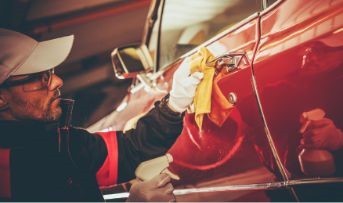
Do you see black spots on your car? It can be fungus
Have you ever noticed black spots on your car's body that do not seem to go away? Despite washing and cleaning the car, you still find them there. Then, you're unaware of the fungus that can grow on your car body.
Black spots on a car can be a common problem for car owners. Many people assume that these spots are caused by dirt or grime. However, in some cases, these spots may be a type of fungus. It usually grows on the car's surface and can be a hassle. It not only spoils your car's appearance but can also be difficult to remove.
If you are also struggling with a similar issue, this article is just for you. We will walk you through everything you should know about car fungus. We have also listed ways to remove these spots and clean your car. Also, to keep your vehicle covered against all mishaps and financial worries, you should look for a good motor insurance company that provides the best insurance.
What are the black spots on cars?
Black spots on a car are often caused by a type of fungus called Alternaria. This fungus thrives in warm, humid environments and can grow on various surfaces, including the car's surface. It is most commonly found in areas with a lot of moisture. It is also common during the monsoon season.
When the fungus grows on a car, it forms small black spots on the surface. These spots can be difficult to remove and appear unsightly on a vehicle with light-coloured paint.
How to prevent black spots on your car?
Preventing black spots on a car starts with keeping the car clean and dry. This means washing the car regularly, especially after it has been exposed to rain or moisture. It is also important to dry the car thoroughly after washing it. There should not be any remaining moisture that can provide a breeding ground for the fungus.
Another way to prevent black spots on a car is to park the car in a covered area, such as a garage or carport. This can help to keep the car dry and reduce the risk of fungus. If you live in an area with high humidity or a lot of rain, investing in a car cover may be a good idea. This can help protect the car from moisture and prevent fungus growth.
How to treat the black spots?
The ways and means to treat the black spots on your car are as follows:
1. Use a specialised fungus remover
These products are designed to remove fungus and can be found at most auto supply stores. Follow the instructions carefully and wear gloves and eye protection when using these products.
2. Vinegar and water mixture
You can use a mixture of vinegar and water to clean the affected areas. This solution can help to kill the fungus and remove the black spots. Mix equal parts vinegar and water and apply the solution to the affected areas with a clean cloth. Rinse the area thoroughly with water and dry it completely after cleaning.
3. Take the car to a professional
You can take the car to a professional detailer to have the black spots removed. A detailer will have the equipment and expertise to remove the spots without damaging the car's paint.
Black spots on a car can be a nuisance for car owners, but they can be prevented and treated with the right care and attention. You should take the necessary steps for your car whenever you spot any black spots on the car's surface.
To keep your car safe and secure, look for a good motor insurance company that offers the best policies at an attractive premium. It is advisable to invest in a comprehensive cover that will compensate you totally if your car faces severe damage.
Click HERE to buy a policy from the best motor insurance company.
Disclaimer: The information provided above is for illustrative purposes only. To get more details, please refer to policy wordings and prospectus before purchasing a policy.
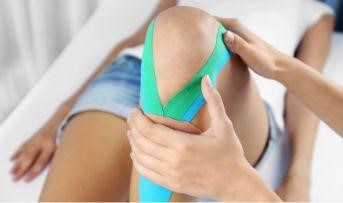
Physiotherapist recommended physical aids and equipment to have at home
Physiotherapy is the treatment of an injury or a disease by exercise, heat, light, muscle strengthening, etc. It is useful in treating joint, muscle, and nerve pain. Physiotherapy uses different therapies such as short-wave diathermy, ultrasonic, and muscle-strengthening methods to cure a patient.
Physiotherapists use several physical aids and equipment in their physiotherapy centres that assist in the treatment process. While some devices are big and immobile, few are handy and can be used at home. Let us have a look at a few of them.
1. Small pelvic traction kit
A pelvic traction kit helps in a therapy program to restore, relax and realign the spine and improvise circulation, flexibility, and mobility. It helps to cure lower back disorders and relieves pain in the lower back, hips, and legs.
There are two types of small pelvic traction kits. The first is a skin traction kit in which adhesive tape or other types of strapping is attached to the limb. The other one is a spine traction kit useful in treating fractured bones. The spine is stretched, which helps to relieve the nerve pressure.
Small pelvic traction kits are now available, which can be installed in our houses. Traction can be applied both manually or through spinal traction devices. This kit is beneficial in treating neck conditions and lower back pain.
2. Grip exerciser
Grip exercisers are also known as hand grippers. They help increase the strength of the hands. They also help bulge the muscles and give our arms a powerful look.
3. Rechargeable heating pads
Rechargeable heating pads are beneficial for relieving aches, cramps, pains, and stiffness of the muscles. They provide heat therapy and promote consistent circulation in your body.
Earlier, we used to get a traditional rubber bottle for performing the same function. Now we have heating pads that work with electricity and can be recharged too. They are very helpful in reducing muscle pain and discomfort in the joints.
4. TENS pain therapy machine
A TENS is a small, portable device that runs on batteries or an adapter with leads connected to sticky pads called electrodes. It is a pain-relieving machine that uses mild electrical current to do its job. It is portable, and you can easily use it at your home. The machine delivers small electrical impulses to the affected areas of your body. You feel a tingling sensation while the electrical impulses reduce the pain and relax your muscles.
5. Wall mounting shoulder pulley
A wall-mounting shoulder pulley is another physiotherapist-recommended physical aid and exercise equipment. It helps in improving the range of motion for people with injuries related to the shoulder. It can also help stretch the neck, shoulder, and muscles of the arm.
6. Rib belt
Bruised and fractured ribs can be healed with the help of a rib belt. It is medical equipment that stabilizes the ribs and gives comfort to them. It is a very comforting belt for those who have just undergone surgery.
7. Knee support
Knee support is a band useful for people suffering from knee pain or those vulnerable to knee pain. It is an inexpensive and useful support equipment to protect the knees or cure the pain in the knee area.
These are some of the physical aids and equipment that physiotherapists recommend having at home. They can help us quickly relieve pain in the joints, muscles, and nerves. Physiotherapy has several advantages, and you do not have to gulp in several doses of allopathic medicines to get relief from pain. Regular usage of such equipment can help to cure your medical problems from the roots.
Physiotherapy is usually needed after you cross the age of 50. Besides these types of equipment, you must choose the best possible health insurance in India for parents. You may need it for problems that physiotherapy alone cannot cure. In such instances, the health insurance policy will take care of your financial liabilities arising from the medical treatment and leave you stress-free and relaxed.
Click HERE to find the best health insurance in India for parents.
Disclaimer: The information provided above is for illustrative purposes only. To get more details, please refer to policy wordings and prospectus before purchasing a policy.

Bike reviews: A comprehensive guide to the latest models and trends
When it comes to buying a bike, whether it's a scooter, motorcycle, or any other type of two-wheeled vehicle, assessing the many options available in the market can be overwhelming. That's where bike reviews come into the picture. They provide a comprehensive guide to the latest models and trends in the industry, making it easier for you to make an informed decision.
The credibility of bike reviews
When reading bike reviews, it is important to consider the source's credibility. Reviews from reputable sources, such as established publications or experienced riders, are generally more reliable than reviews from unknown sources. You can visit different articles or watch online review videos to get more clarity on your decision.
Reading reviews from multiple sources
To get a well-rounded understanding of a bike and its features, reading reviews from multiple sources is a good idea. This will give you a variety of perspectives and opinions on the bike, helping you to decide on the model that fits your requirements. For honest feedback, you can even ask for reviews from existing owners of the two-wheeler you wish to purchase.
Benefits of reading bike reviews
Reading bike reviews offers many benefits, such as staying up-to-date on the latest trends in the industry, comparing different models and features, and finalising your budget.
Latest trends in the bike industry
The bike industry is evolving and constantly introducing new models with additional features. Here are some of the latest trends in the industry that you should know about:
● Electric two-wheelers: With a growing focus on sustainability and reducing carbon emissions, electric two-wheelers have become increasingly popular in recent years. Rechargeable batteries power these vehicles and offer a more environmentally-friendly alternative to traditional petrol-powered two-wheelers.
● Smart technology: Two-wheelers are becoming smarter by integrating advanced technology such as Bluetooth connectivity, GPS navigation, and smartphone integration. This allows riders to stay connected and access important information on the go, improving safety and convenience.
● Lightweight materials: Lightweight materials such as carbon fibre and aluminium are used more frequently in manufacturing two-wheelers, making them lighter and more agile on the road. This improves performance and manoeuvrability, allowing riders to enjoy a smoother and more comfortable ride.
● Safety features: Two-wheelers have more advanced safety features such as anti-lock braking systems (ABS), traction control, and automatic emergency braking. These features help prevent accidents and improve the overall safety of riders on the road.
● Customisation: Two-wheeler manufacturers now offer a wider range of customisation options, allowing riders to personalise their vehicles to their unique preferences. This includes everything from custom paint jobs to aftermarket accessories and performance upgrades.
The importance of setting a budget
Bikes can range in price from a few thousand to several lakhs of rupees, depending on the model and brand. Setting a budget beforehand allows you to compare your options and choose a bike that fits your budget.
Importance of 2 wheeler insurance online
When you purchase a bike, it's important to consider purchasing 2 wheeler insurance online. Not only is it mandatory by law to have third-party insurance coverage for your vehicle, but it can also provide financial protection in case of accidents, theft, or other unexpected events. By purchasing 2 wheeler insurance online, you can compare policies from different insurance providers, choose the one that best fits your needs, and easily make payments and file claims online. This can save you time and hassle, allowing you to focus on enjoying your bike with peace of mind.
Bike reviews are a comprehensive guide to the latest models and trends in the industry. By reading reviews, you can stay up-to-date on the latest advancements in the industry, compare different models and their features, and decide on a bike that meets your needs and fits your budget.
Click HERE to buy the best 2 wheeler insurance online for your new bike.
Disclaimer: The information provided above is for illustrative purposes only. To get more details, please refer to policy wordings and prospectus before purchasing a policy.
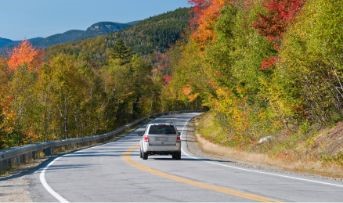
Best tips to perfectly drive a car upward on a slope
Most drivers would agree that driving is a non-challenging task for the most part. Driving on straight, flat roads is a breeze if you practise lane driving and indicate clearly. New drivers face issues only when they face inclined roads. Greatly dependent on the driver’s skill, confidence, judgement, and the slope gradient, with the following tips, you can zip through meandering bends on slopes with ease!
While perfect control over the ABCs- Accelerator, Brake, and Clutch can help prevent accidents, car insurance helps minimise the financial damages that result from accidents. Therefore, before you take on the task, purchase a comprehensive car insurance policy that covers the risk of any mishaps you may encounter on your driving adventures.
1. Do not panic
The first step towards driving failure is panicking. Approach the situation level-headedly when you spot an incoming inclination. It is natural for the car to roll back while you steer it upwards. However, with your right leg ready to switch from the accelerator to step on the break and your left hand ready to engage the hand brake, clear assessment can help you avoid collisions on your ascent.
2. Avoid paddling
Paddling is a technique that relies entirely on car pedals. It requires great concentration and skill to gauge when to switch between the brake and the accelerator. It eliminates the need for handbraking. Drivers start the climb by engaging the clutch and brake before putting the car in first gear. When the gear is engaged, you must shift from the brake to the accelerator while slowly releasing the clutch.
You need to ensure that the pressure applied on the accelerator is not too hard, as it ruins the pedal functioning in the long run. It also adversely affects the car’s engine and excessively consumes fuel. Considering that car insurance does not compensate for accidents caused by engine damage due to long-term use, it is best to avoid the technique.
3. Familiarise yourself with the handbrake
Straight, flat roads do not require drivers to use the handbrake regularly except while parking. However, using the handbrake while starting your vehicle on inclinations is ideal. Ensure that you are used to engaging and disengaging the brake lever. While most automobiles have a standard handbrake, some may have an awkwardly placed or difficult-to-engage lever that you must familiarise yourself with before tackling slopes.
4. Use diesel-induced torque efficiently
Diesel cars have an advantage over petrol or CNG vehicles in terms of engine torque. Torque is the ability of the car to perform, which is directly impacted by its fuel. A diesel-fueled car on inclined roads is ideal for faster acceleration and a firm grip, minimising the chances of rolling back.
5. Maintain distance from the car ahead
While maintaining a safe distance is necessary on all roads, slopes are critical to prevent collisions if the car ahead rolls back. This prevents you from panicking and making poor decisions due to a lack of time to act.
6. Stick to lower gears
The lower the gear, the lesser the resistance and the easier the climb. While starting the climb, stick to the first gear and move up to the second or third gear at most if the inclination gradually reduces. If you feel your car rumble, reduce your acceleration, engage the clutch, and drop the gear to prevent your engine from shutting down.
7. Use the handbraking technique
The paddling technique used moderately while relying on the handbrake is the best approach for uphill drives. While ascending, the car is put in first gear and accelerated slowly immediately upon release of the handbrake. This makes the car move forward. To take the vehicle further, apply pressure on the accelerator and slowly release the clutch.
Driving upwards on a slope may initially seem daunting, but even beginners can ace the task with adequate practice. As a precautionary mechanism, one must always purchase car insurance with a sufficient sum and coverage to minimise the cost of accidents and allied damages.
Click HERE to buy the best car insurance policy.
Disclaimer: The information provided above is for illustrative purposes only. To get more details, please refer to policy wordings and prospectus before purchasing a policy.


